Discover financial empowerment resources
Discover financial empowerment resources
ACORN Canada undertook a study focusing on high interest loans, especially when taken online. For the purpose of the study, high interest loans were defined as loans such as payday loans, installment loans, title loans etc. that are taken from companies/institutions that are not regular banks or...
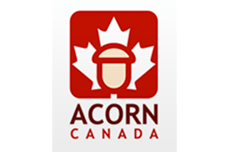
Everyone needs to bank and nearly everyone has a relationship with at least one financial institution. Financial Institutions need relationships with consumers too, in order to thrive as businesses. The role these relationships play in financial decision making for Canadians is an important...

This report explores consumer financial health, wellness/ stress and resilience for Canadians across a range of financial health indicators, demographics and all provinces excluding Quebec. This report provides topline results from the 2019 Financial Health Index study and three-year trends from...

In early 2017 Momentum reached out to over 50 community members and participants to better understand local experiences with high-cost alternative financial services. In addition to connecting with individuals through interviews, Momentum hosted community consultations in partnership with Poverty...
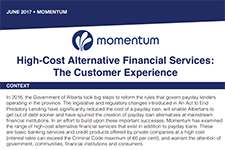
Many Albertans turn to high-cost alternative financial services when they need a short-term fix for a financial issue. Though these services are expensive and unsafe, they are often the only option for low-income individuals, particularly those who struggle to obtain credit at mainstream financial...

Many Canadians turn to high-cost alternative financial services when they need a short-term fix for a budgetary issue. Though these banking and credit alternatives are a convenient choice for individuals in search of fast cash, particularly those who face barriers to obtaining credit at a bank or...
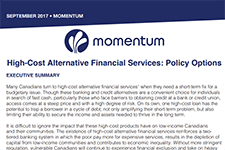
This paper contributes to the literature on the state of household finances in Canada by constructing new indicators using Canadian microdata based on Canadian and international literature. Using data from the Survey of Financial Security (1999, 2005 and 2012), and also the Canadian Financial...
This handout is from Module 4 of the Financial Literacy Facilitator Resources. Alternative financial services are outside of the traditional, regulated banking system. They do not take deposits like a bank or credit union. To view full Financial Literacy Facilitator Resources, click...
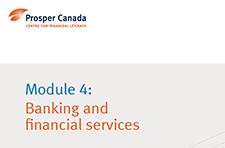
This webinar, "High cost lending in Canada: Risks, regulations, and alternatives," is about why high cost lending products are concerning, especially for financially vulnerable Canadians. Speakers discuss what is driving the use of these products, what kind of regulations are involved, and what...
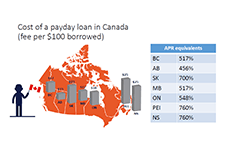
When household emergencies strike or there’s not enough in the bank to make it to the next paycheck, some families turn to small-dollar credit—small loans from alternative financial service (AFS) providers, such as payday lenders or pawnshops, or from mainstream sources. In October 2014, the...
Opening a bank account is the first step towards financial inclusion and building long-term wealth. Yet nearly 9 million U.S. households are unbanked, meaning no person in the household holds a bank account. In addition, 25 million households are underbanked, meaning that they have a checking or...
This paper analyzes findings from a survey by ACORN Canada of a sampling of its membership to understand why they turn to alternative financial services such as high interest payday loans. The survey finds that the majority of the 268 respondents turn to these services as a last resort because they...
Payday loans are an expensive way for consumers to borrow money. The use of these short-term, high-cost loans has more than doubled in Canada recently to four percent of Canadian households. The Financial Consumer Agency of Canada (FCAC) has been tasked with raising public awareness about the costs...
In 2014, the licensed Canadian payday loan industry provided nearly 4.5 million short-term loans to Canadian households, at a total value of $2.2 billion. Despite its unfavourable reputation, the licensed payday loans industry provides a necessary service for cash-strapped Canadians. Placing...
Despite the fact that, with only basic identification, all Canadians have the legal right to open a bank account, there has been an explosive growth in fringe financial institutions (FFIs) over the past decade or so which offer financial services such as cheque cashing, payday loans, and income...
Deficits in appropriate and affordable housing may also interact with other forms of exclusion, creating cycles of increased exclusion and risk. In the current study, we consider the interaction between homelessness and access to mainstream financial services. The conceptual model proposes that,...
This brief is the joint submission of the Canadian Literacy and Learning Network (CLLN), Momentum Calgary, SEED Winnipeg, Social and Enterprise Development Innovations (SEDI), and St. Christopher House in Toronto – five non-profit organizations working to strengthen the financial inclusion and...
Confused about how Canadian households are doing financially? Financial experts, policymakers, and media tell a conflicting story. What is really happening? This presentation is based on data from the Canadian Survey of Financial Capability in 2008 and 2014. It shows the state of Canadian financial...
This brief overview of the financial literacy needs of Aboriginal peoples was generated through consultations with experts in the field and insights shared by TD Financial Literacy Grant Fund recipients. Its aim is to share knowledge with ABLE Financial Empowerment Conference participants to inform...
Financial stability affords families with low incomes a bulwark against the crises of sporadic income, unexpected expenses, and a reliance on predatory fringe services and also provides an opportunity to start actively planning for a solid financial future. Achieving a stable financial foundation...
Since the early 1990s payday lending businesses have become increasingly prolific in most parts of Canada, including Calgary. Social agencies and advocates working to reduce poverty view payday lenders and other fringe financial businesses as problematic for those looking to exit the cycle of...
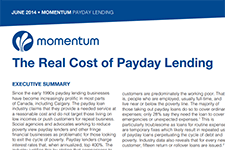
Payday loans typically carry annual percentage rates of 300 to 500 percent and are due in a lump sum, or balloon payment, on the borrower’s next payday, usually about two weeks later. These loans are advertised as quick fixes for unexpected expenses, but repaying them consumes more than a third...
This report provides a variety of analyses on payday loans, payday installment loans, vehicle title loans, and deposit advance products. There are individual chapters on consumer usage and patters for vehicle title installment loans and payday installment loans, the impact of storefront payday...
Behavioural economics is the study of how people make decisions in a complex and textured world where details matter. It draws from the fields of economics and psychology, but brings a unique perspective that departs from each of these fields in important ways. behavioural economics differs from...
Simply doing away with payday loans will help some, but it will also hurt others. To truly improve the small dollar credit market, increased access to well-structured and more affordable small dollar credit (what this paper refers to as enabling small-dollar credit) is vital. Building an enabling...
